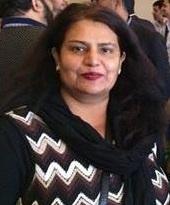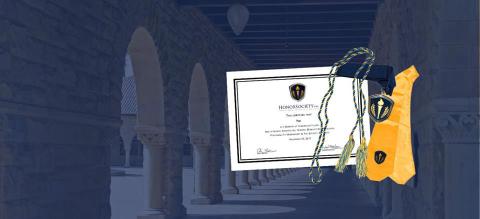Zartasha Shah (profile)
Dec 20,2015
This is Zartasha Shah. I'm registered for my M.Ed in Curriculum and Instruction with an emphasis in Art Education classes and this fall 2015 semester is my first semester at College of Education at the University of Houston main campus. I'm not registered for spring 2016 and summer 2016. I'll take fall 2016.
My major revolves around multiple things including art history, art education, art (studio and graphics), curriculum and instruction, and speech. It establishes practical approach to develop the knowledge and skills of its students in art history and art education. It introduces a contemporary approach to share several methods and materials in details. It highlights several issues that are taking place in the fields of art history and art education. It develops the knowledge of community-based education by explaining the details of the strategies that are playing an important role in this specific field of education. It helps students to understand the importance of art education, art history, technology, research, community-based education, criticism, and curriculum and instruction. It helps students to achieve their goals in the fields of art history, art education, analytical and critical writing, museums and galleries, and school management. It also helps students to work for non-profit organizations, art promoters, art historians, art educators, museums and galleries, and community workers.
The awareness of the environment, the current position of the system, and the availability of the latest technology helps to understand the use and the availability of these facilities in our lives. The students are able to develop their knowledge, skills, and abilities through the experiences of their lives. To develop the sence of creativity and performance and to achieve their goals in their lives, they learn several things in the college of education to face the challenges of their lives. They collaborate their customs with their traditions to observe the vaules and the importance of both by learn about the diversity of these cultures. The final results can tell about the quality of their observation and judgement to us. The collaboration for activities and presentations help these students to understand each other. The process of research is also very vast and it has several challenges for them. They select a topic to do their research by using multiple sources from multiple medias and to share their reserach with their classmates at school. They are also required to demonstrate the techniques, methods, and materials in their classes. When they demonstrate in their classes, they get a quick and a prompt response from others. It helps them to understand several things from each other.
Reading responses, talking points, lesson plans, lesson demos, and field works are very important for this degree program. Students are required to read their specific articles and books for their class assignments. They are also required to share their thoughts and comments to evaluate the quality of the responses of their classmates on blackboard. On the other hand, lesson plans are revolving around their chosen topics. They make a lesson plan about their chosen topics to share their knowledge, skills, and abilities with their Instructor and their classmates to present their lesson plan in their classrooms. Most of the students are teaching in the state of Texas. They are familiar with the process and they also know how to take care of these things.
The field of visual and performing art is an important part of the masters program and visual literacy plays an important role in it. The education and the skills of an artist, a musician, a dance Instructor, and a theater Instructor are very imoprtant in the field of visual and performing art. They are the ambassadors of their countries. They educate, entertain, and inform their viewers through their performances, works, and skills. For example, when an artist makes a painting, he wants to exhibit his work to get an opinion from others because; he uses his time, energy, and an imagination to create an artwork for him. When a musician composes a music, he wants to perform his composition on the stage to get a prompt response from his audience becasue; he is able to compose, perform, and explain the basic theme behind it.
The professional seminar class is online and it consists of three parts including research, technology, and community. This class requires an APA format for all of the assignments from students. The teachers select the topics for students and students are required to do the research about their given topics and their responses are supposed to be revolving around their chosen themes. Students need to submit their work online. Students have three types of classes at UH main including hybrid classes, in-person classes, and online classes. When they complete an assignment, they submit their work online to get evaluated and graded from their instructors. The process of research consists of several parts including assessing, analyzing, processing, evaluating, and checking the outcomes of these things. Sometimes, a research needs a data to check the quantitative research and the qualitative research from students, educators, and researchers. I like to do the qualitative research instead.
The technology class is more about 21st century skills, curriculum and instruction, discussions, rubrics, screen casts, screenshot, and the PowerPoint Presentations. Designing and developing digital models to complete the assignments is more about the process of learning and professional practicing. This engagement gives a chance to know more about the leadership, digital tools, and the content. This experience improves the mental growth of students by expanding their horizon and by adding more information about social, political, educational, and cultural issues to it. Constructivism is an important part of the learning process in these classes. Structuralism is also has an association with it. Several activities, assignments, and readings support these parts of the education and visual literacy is also a part of it. To communicate with her, students use twitter to share their ideas with her and the rest of the class through social media. Sometimes, students use google doc to share their thoughts with her. Another interesting part of the technology is about web-cam discussion. For these students who are not using web-cam devices, they can do texting to join the conversation. In the end of the conversation, they get an evaluation from her
The role of a community is very important in the life of an educator and a student. Humans are social animals and they like their environment. They like to communicate with their community to get civilized, socialized, and established. I respect my community and like to communicate with my community. I also like to share my talent, skills, and knowledge with them. My works as an artist, graphic designer, photographer, curator, article writer, volunteer, part-time teacher, poet, and a students are able to share my selfless services in the state of Texas. My class, community education is more about working as an individual and a part of the educational, social, and cultural activities of the community. It gives a chance to students to investigate the issues that are causing problems in the community. It engages students in the activities of the community centers that allow students to join their community to help each other. It develops the knowledge, skills, and abilities of students in their society. Community reflection, community investigation, and community education plan assignments are very broad and they expand the knowledge of students through the process of learning, investigating, and researching. To find the better solution of the community issues, students gather the information about the cause and effect and try to find the easier and a faster way to resolve the problems. Education is an important part of the learning process. Students do investigate the new educational programs for the young students and adults at the community centers, museums, galleries, religious places, and through the non- profit organizations. The relationship between the community and education is very important in the socity. The role of a school district, teachers, students, and parents tells us about the process of learning in the system. The importance of the curriculum, standardized testing, and core can be seen through the outcomes of these things. Class discussions also give a chance to know more about these things from other students.
Art education revolves around the teachings of art and art education. It also expands the horizon of knowledge by adding more information about art, art education, museums, galleries, art promoters, art historians, art educators, non-profit organizations, institutions, and community workers to it. The history of art education is an important part of this degree program. It revolves around the classical, middle ages, Renaissance (early, high, northern, and mannerism), 17th century, and the period of enlightenment or the 18th century. It also tells us about the work of educators, supporters, and promoters of art education by sharing the information about it. The role of the French academy is important to us. It tells us about their efforts, planning, and struggle in France. They supported the artists and promoted their plans to give them a moral support in their country. The artists were able to survive in Europe. In 1800s, the United States also supported and promoted art education, art, art history, and the artists of the country. Several states were able to work for them. The educators were also willing to work for education. Studio art classes were started in the United States at that time. Several courses about art education and studio art were available for students and teachers were hired to teach their students at several schools, colleges, and universities. Museums and galleries also decided to offer their programs to their students.
On the other hand, the periods of world war I (1914-1918) and world war II (1939-1945) are bit depressing and frustrating for art educators, artists, and art students. The students of art education are required to know about the history of art education
The roles of visual culture, visual literacy, and media are also very important to the filed of art education in the 19th century. The use of the latest technology, devices, and visual aid expanded the knowledge of students by sharing more information with them. The use of the websites, PowerPoint presentations, overhead projectors, and web-cam also expands the process for them. Online articles, magazines, virtual tours, databases, newspapers, books, and other supportive materials also expand the knowledge of students at schools. Educational videos, audios, channels, documentaries, and games are also in visual literacy.
Over all, my degree program is a great program and I'm glad that I'm making it. It is expanding the horizon of my knowledge by adding more to it. It is also developing my knowledge about my chosen classes, topics, and the fields of education at my department of education at the University of Houston main campus in Houston, Texas.
Zartasha Shah






